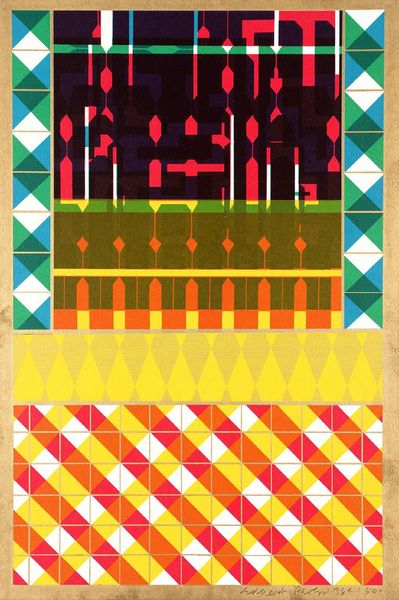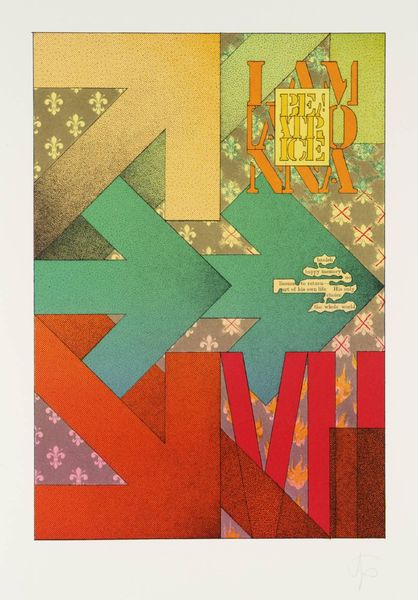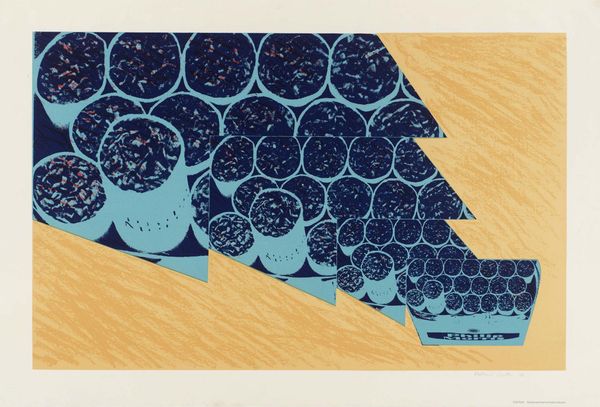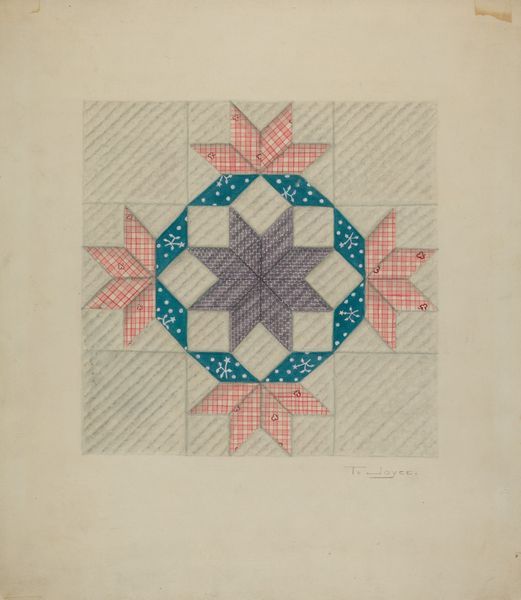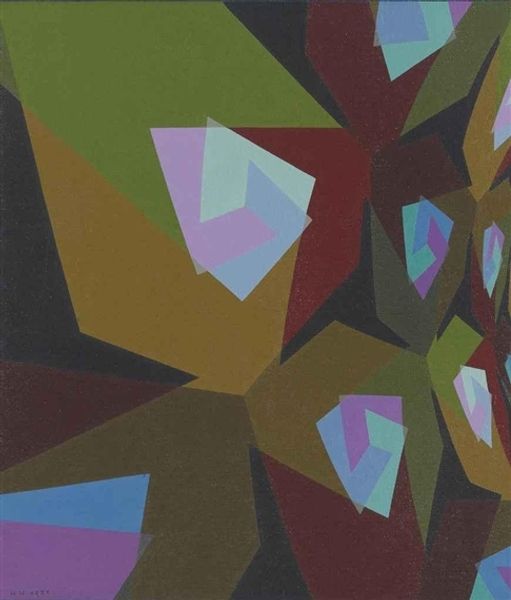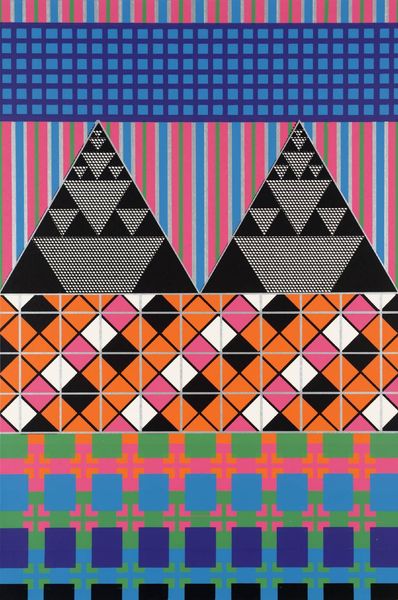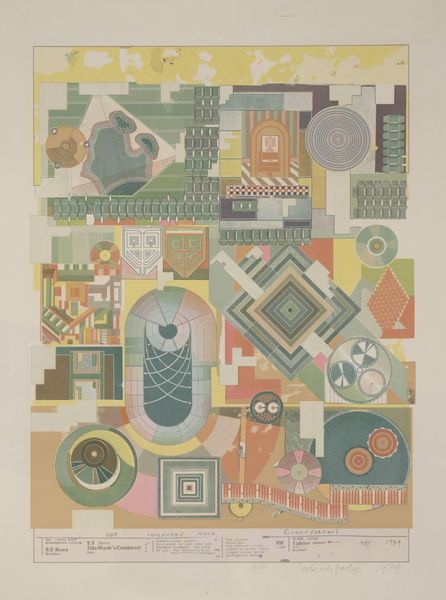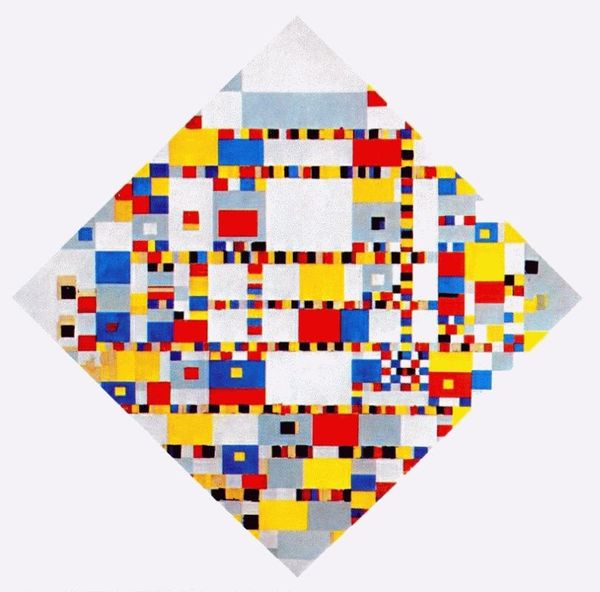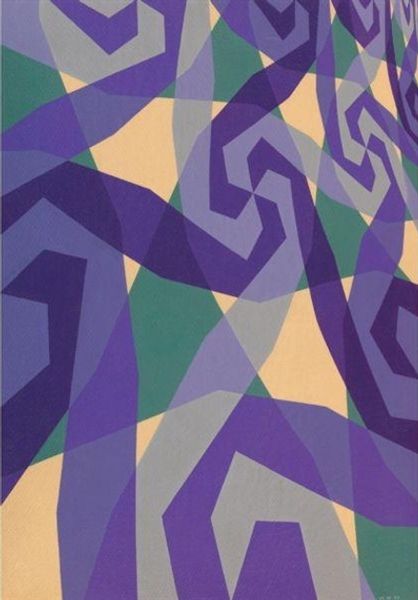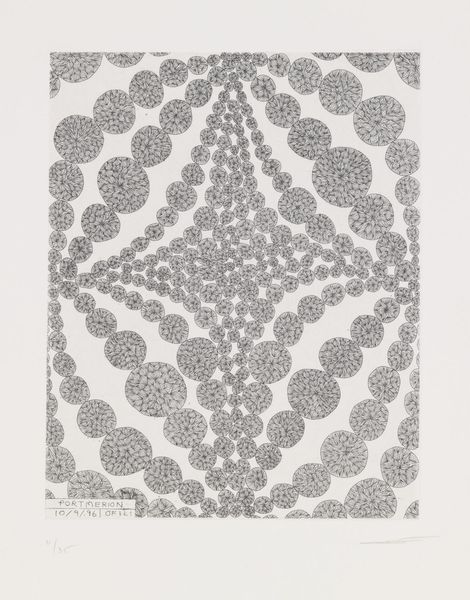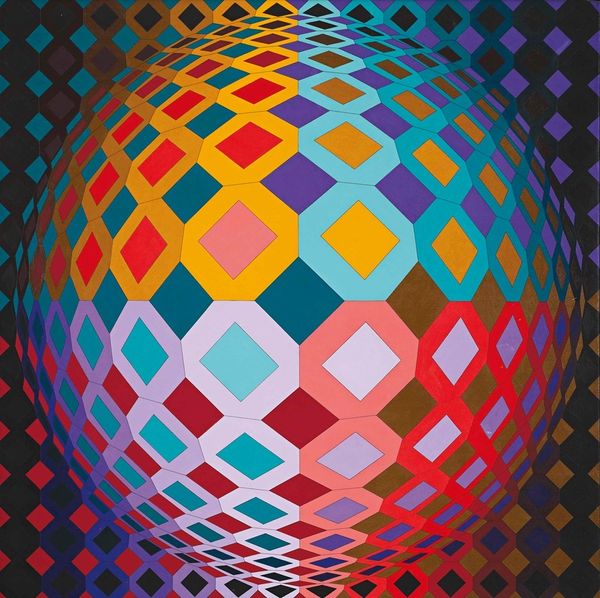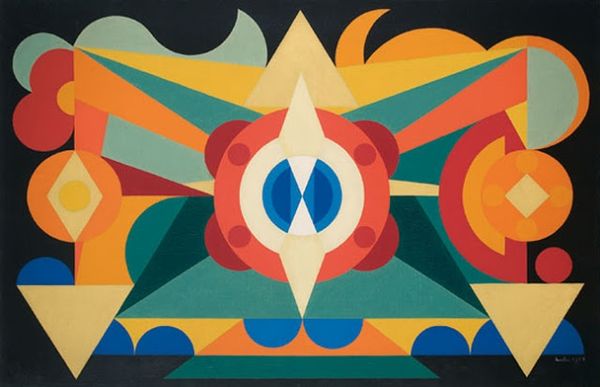
acrylic-paint
#
pattern heavy
#
acrylic-paint
#
geometric pattern
#
abstract pattern
#
organic pattern
#
geometric
#
geometric-abstraction
#
repetition of pattern
#
vertical pattern
#
abstraction
#
pattern repetition
#
layered pattern
#
funky pattern
#
combined pattern
Dimensions: overall: 106.68 × 106.68 cm (42 × 42 in.)
Copyright: National Gallery of Art: CC0 1.0
Editor: "Flamma," created by Simon Gouverneur in 1989, seems to explode with geometric shapes and colors. The title evokes "flame," yet I'm drawn to its orderly nature. The patterns create a real sense of energy. What's your interpretation? Curator: Considering the socio-political climate of the late 1980s, post-modernism celebrated eclecticism, challenging the rigid ideals of earlier movements. Think about it – what artistic norms were these “funky patterns” potentially rebelling against? And how might this piece engage with institutions of power or challenge conventional tastes? Editor: I see… The strict geometry hints at order, but the bright, clashing colors resist being controlled. Perhaps it's a controlled burst of rebellion, like a cultural shift happening right beneath the surface? Curator: Exactly! The very act of repeating patterns was loaded, especially given the dominance of "high art" institutions often prioritizing individual expression. Gouverneur’s choice of mixed media, potentially sourced from everyday life, moves us away from the myth of the solitary genius. Do you think "Flamma" invites us to rethink the boundaries between fine art and craft, or art and design? Editor: Definitely. It challenges a hierarchy, suggesting the value in what’s typically deemed ‘lesser.’ It reflects a broader societal conversation, the deconstruction of what is accepted, perhaps opening doors for wider participation in the art world. Curator: And where this piece lives–in a museum, on a wall–affects its reception. It gains institutional validation, inviting larger discussions about the power dynamics within the art ecosystem and how "good taste" gets defined. Editor: It’s interesting how placing a work within a specific historical moment shapes your view of it. Thank you! Curator: And thank you for helping me view this familiar work through fresh eyes!
Comments
No comments
Be the first to comment and join the conversation on the ultimate creative platform.
